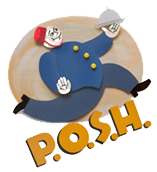Antique Queen Victoria 1887 Golden Jubilee Glass Bonbonnière
Antique Queen Victoria 1887 Golden Jubilee Glass Bonbonnière
$195.00
Proudly produced in England to commemorate the 1887 Golden Jubilee Year of Queen Victoria's reign, this stunning Antique Queen Victoria 1887 Golden Jubilee Glass Bonbonnière sparkles from every angle. Composed of a lower dish with attached underplate and majestic lid, its crown-inspired silhouette slopes gracefully from an articulated finial to the lovely scalloped edge that frames the lower perimeter.
Crafted with glass beading in playfully arranged patterns to reveal a most regal motif, the lower base of the covered dish showcases the iconic Imperial State Crown commissioned specifically for Queen Victoria's coronation in 1837. Visible through the dome-shaped lid, the image is superimposed with the dates 1837 and 1887 on either side of the crown's monde and cross symbolizing the monarch's dominion over both the spiritual and temporal realms. The grand lid announces 'The Queen’s Jubilee' with a simplified rendering of the monarch's style VR in a cursive script and dates 1837 and 1887.
This compote is sure to be one of the crowning pieces of your coronation collection.
Strictly one-of-a-kind and subject to prior sale. 7.25"H x 5.25" in diameter. In very good antique condition with a few internal fractures visible upon close inspection. These fractures do not reach the surface of the glass and are not cracks.
Learn More About Queen Victoria
Queen Victoria was the monarch of the United Kingdom of Great Britain and Ireland from June 20, 1837 until her death on January 22, 1901. From May 1, 1876, she used the additional title of Empress of India.
Victoria married her first cousin, Prince Albert of Saxe-Coburg and Gotha, in 1840. Their nine children all married into royal and noble families across the continent, tying them together and earning her the nickname "the grandmother of Europe". After Albert's death in 1861, Victoria plunged into deep mourning, wore black for the remainder of her life and avoided public appearances. She rarely set foot in London in the following years and her seclusion earned her the name "widow of Windsor". As a result of her seclusion, the monarchy lost favor with many British citizens, but in the latter half of her reign, her popularity recovered.
The 50th anniversary of her reign, her Golden Jubilee, was a time of public celebration. On June 20, 1887, Queen Victoria began her Golden Jubilee celebration by taking her breakfast outdoors under the trees at Frogmore, where her beloved husband Prince Albert had been buried. She then traveled by train from Windsor Castle to Buckingham Palace for a royal banquet that evening. Fifty foreign kings and princes, along with the governing heads of Britain's overseas colonies and dominions, attended. She wrote in her diary: "Had a large family dinner. All the Royalties assembled in the Bow Room, and we dined in the Supper-room, which looked splendid with the buffet covered with the gold plate. The table was a large horseshoe one, with many lights on it. The King of Denmark took me in, and Willy of Greece sat on my other side. The Princes were all in uniform, and the Princesses were all beautifully dressed. Afterwards we went into the Ballroom, where my band played."
Her reign of 63 years and seven months is known as the Victorian era. It was a period of industrial, cultural, political, scientific, and military change within the United Kingdom, and was marked by a great expansion of the British Empire.












